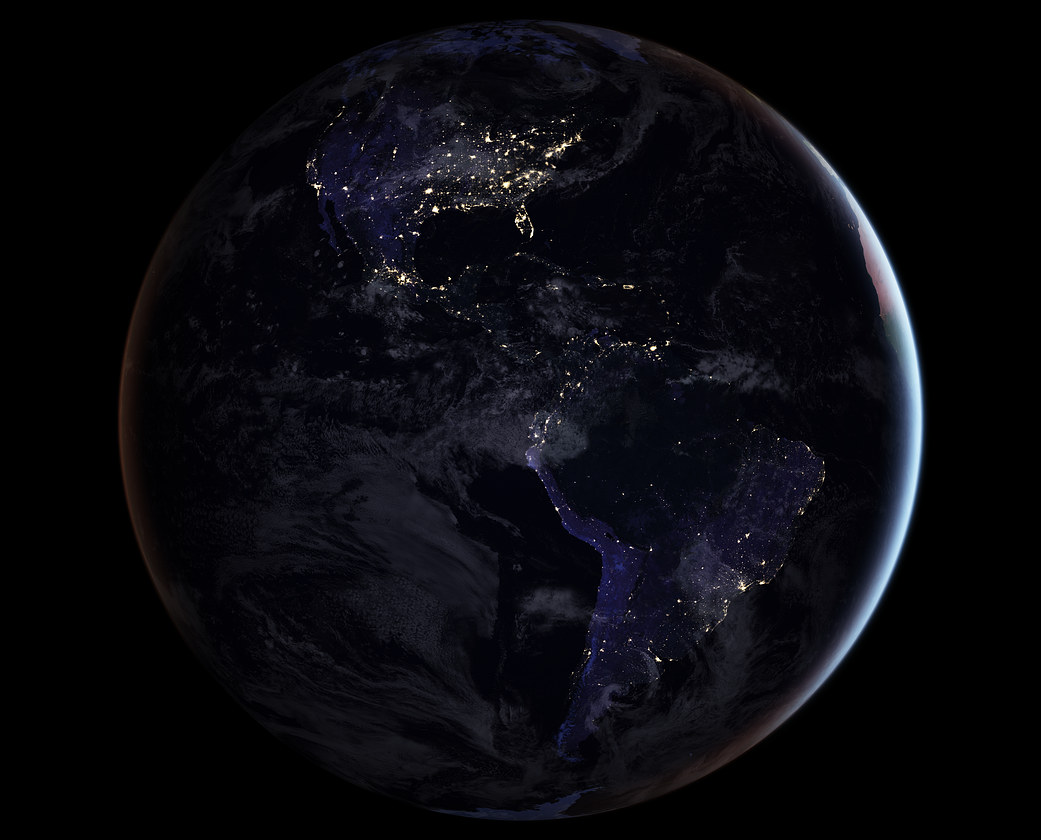In the years since the 2011 launch of the NASA-NOAA Suomi National Polar-orbiting Partnership (NPP) satellite, a research team at the agency’s Goddard Space Flight Center has been analyzing night-lights data and developing new software and algorithms to make night lights imagery clearer, more accurate and readily available.
This is one of several global images released in 2017.
Fifty years ago, on April 22, 1970, people around the world marked the first Earth Day. On this Earth Day, as we physically separate ourselves by necessity, we can still collectively appreciate the wondrous beauty of our planet and the extraordinary science that helps us understand how it all works – and we can do it from our homes.
Follow along this week as we celebrate #EarthDayAtHome with NASA.
Download the Earth at Night ebook.
Image Credit: NASA Earth Observatory image by Joshua Stevens, using Suomi NPP VIIRS data from Miguel Román, NASA’s Goddard Space Flight Center
自2011年美国国家航空航天局(NASA)和美国国家海洋和大气管理局(NOAA)联合发射国家极地轨道伙伴关系(NPP)卫星以来,该机构戈达德太空飞行中心(Goddard Space Flight Center)的一个研究团队一直在分析夜间灯光数据,并开发新的软件和算法,以使夜灯图像更清晰、更准确、更容易获取。
这是2017年发布的几张全球图片之一。
50年前,1970年4月22日,世界各地的人们庆祝了第一个地球日。今年的世界地球日,即使疫情之下人们不得不彼此隔离,我们仍能一同欣赏地球奇绝的美丽,以及吸引了一代代科学家不断探索的深刻科学,而如今,我们呆在家里就能借用这些科学了解地球运作的方式。
本周跟随我们与美国国家航空航天局(NASA)一起庆祝#EarthDayAtHome。
下载“夜间地球”电子书。
图片来源:NASA Earth Observatory image by Joshua Stevens, using Suomi NPP VIIRS data from Miguel Román, NASA’s Goddard Space Flight Center








只有当我们面对宇宙的时候,我们才能真正感到自己的渺小,生活中的一切琐事,在宇宙面前不值一提
beautiful!